Our Blog - Lyon Day 3
Today we started by heading up north to the Croix-Rousse section of town to go to the Amphitheater of the Three Gauls. The amphitheater was built in 12 BC and enlarged around 120 AD under Emperor Hadrien. In 177, the first Christian martyrs of Gaul were tortured and killed here. It contained the name of the Gallic family who financed the building of the amphitheater, as well as the names of the Gallic tribes of Arverni, Tricasses, and Bituriges. It is oval in shape and smaller than those at Nîmes and Arles, starting with a capacity of about 2,000 and later being expanded to seat around 20,000. There are indications that some of the arches were visible in the 16th century as they are listed on city plans. First excavations between 1818 and 1820 revealed the arena but then they covered it back up. Part of the arena, as you can see, basically was destroyed when the city expanded and they built a road there. What we see today was excavated in several digs between 1956 and 1978.








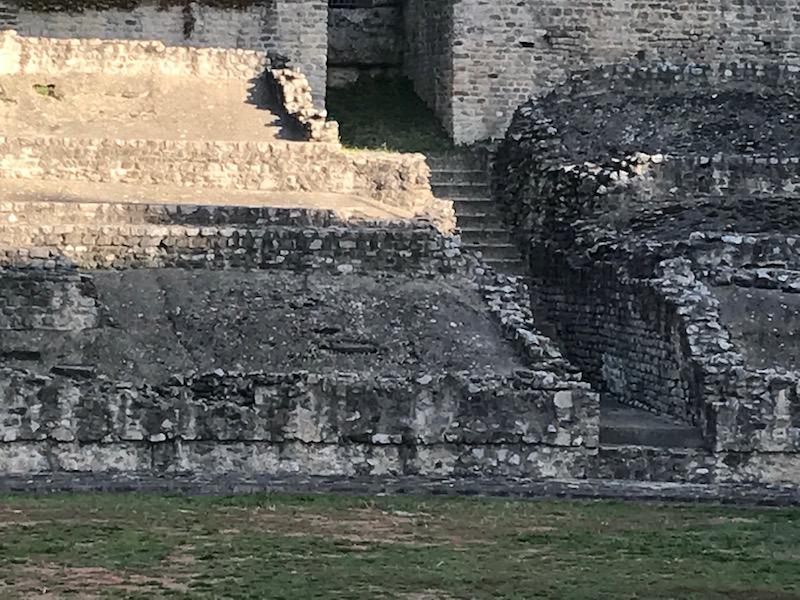
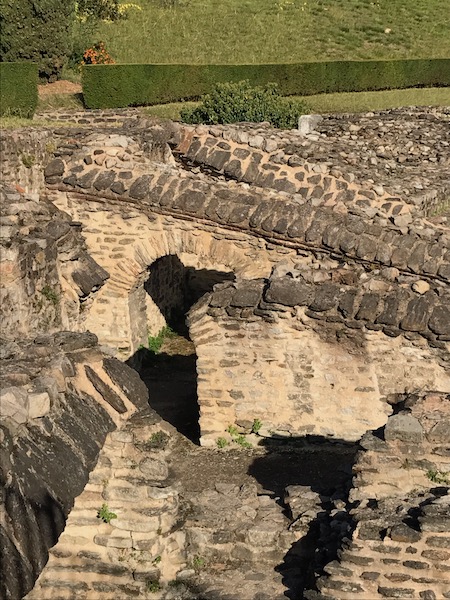
Village of Creators (Le village des créateurs in French) is a set of workshops and stores for up-and-coming artists and artisans. The concept is to allow young artisan entrepreneurs a space to work and sell their wares that is together and affordable. They would normally stay for a couple years and then (hopefully) are successful and can "move up" to their own location somewhere. It is located on the slopes of the Croix-Rousse area within Passage Triaffait. This used to the house and traboule of Mr. Triaffait (hence the name). It was renovated to make the village but kept the nice portico entrance and the courtyard, as well as the curved traboule and staircase that goes up the hill.

At the foot of the Croix-Rousse slopes stands the Hotel de Ville, or City Hall of Lyon. In the 17th century, the peninsula between the Rhone and Saône rivers became the heart of the city, and so it made sense to build the city hall there. The square and the building were built between 1646 and 1672. It was damaged several times, by fire as well as bombs during the French Revolution. The relief on the front of the building, which is now King Henry IV, used to be that of Louis XIV on horseback (removed during the revolution but only replaced in 1829). The building is organized around two courtyards, one of which is elevated and four corner pavilions with a belfry encircling the main courtyard. We didn't go inside, but supposedly the interior has some wonderful Baroque decorations. The last picture shows the back-side of the building, and you can somewhat see through the arches in the middle into one courtyard and then another set of arches that would go into the 2nd courtyard.





In front of the Hotel de Ville is Place des Terreaux, with the famous Fontaine Bartholdi. There is an interesting story behind this fountain. In 1857, the Bordeaux (this is not a typo, it is actually Bordeaux) held a competition for a fountain for Place Quinconces. Frédéric Bartholdi won the contest but then they decided not to actually follow through with the project. Bartholdi then went on to create the Statue of Liberty in 1886. Well, after this feat, the mayor of Bordeaux contacted him and he created the fountain in 1888. Yea, you would think this was the end, but it was deemed too expensive and the fountain was sold to Lyon and put into this place in front of the Hotel de Ville. The fountain depicts France as a female seated on a chariot controlling the four great rivers of France, represented by wildly rearing and plunging horses, highly individualized but symmetrically arranged, with bridles and reins of water weeds. Unfortunately, they are are in the process of restoration works, and so you can't really see the fountain. The first picture is what we saw, with the fountain mostly hidden behind scaffolding. I'm cheating a little bit here .. back in 2007, we went to Lyon and I have a picture from back then with me sitting in front, so that you can see what it looks like. We'll have to go back again after the restoration work to see the fountain back in all of its' glory.


From the backside of the Hotel de Ville, if you turn around, you are standing in front of the Lyon Opera. The façade is from the original 1831 opera house while the round roof and all of the interior is from 1993. This original 1831 façade is Neoclassical and originally had the 9 muses on top. When it was updated in 1993, the 9th muse (Uranie) was removed to keep the symmetry of the building.

The Palais de la Bourse (or Palais du Commerce) which dates back to the 17th century, was started in 1856 and opened in 1860 by Napoleon III and Empress Eugenie. It is not as ornate as some buildings on the exterior, but it is a massive building and it does have plenty of decoration to make it stand out. It does have a unique place in French history though. In 1894, the French President, Sadi Carnot, was killed here. Carnot was speaking at a public banquet here in June 1894, and as he was leaving, he was stabbed by an Italian anarchist. There is supposedly a red paving stone on the ground and a commemorative plaque on the wall where it occurred (although we didn't go close enough to see).

The Church of St. Bonaventure is the only medieval building that was NOT demolished to create the rue de la République. The church was completed in 1327, originally built for a community of Franciscan monks, named Cordeliers (this is where the square nearby gets its name). While the building dates back to medieval times, the façade was redone in 1859. The interior is fairly simple and the nave it not as high as others we have seen. Almost all of the stained glass windows were destroyed in 1944 when the nearby Lafayette Bridge was bombed, so they only date back to the mid 1900's.

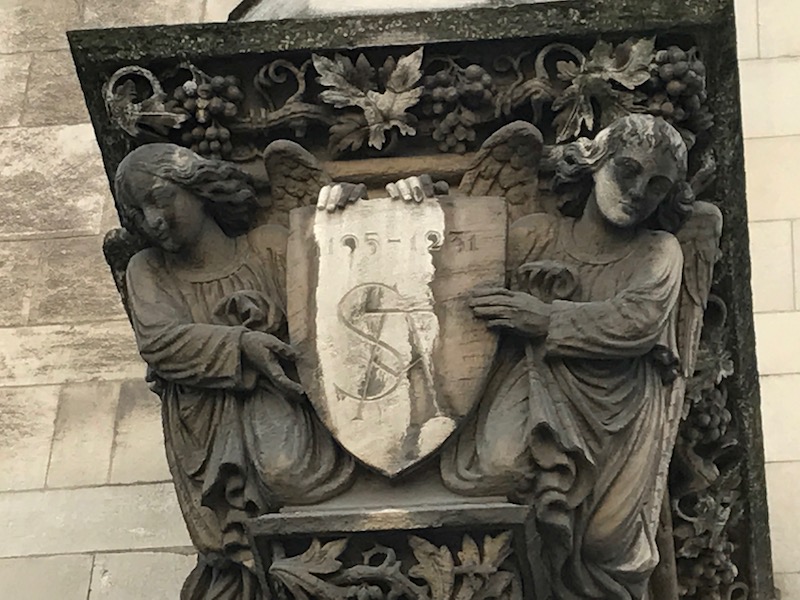
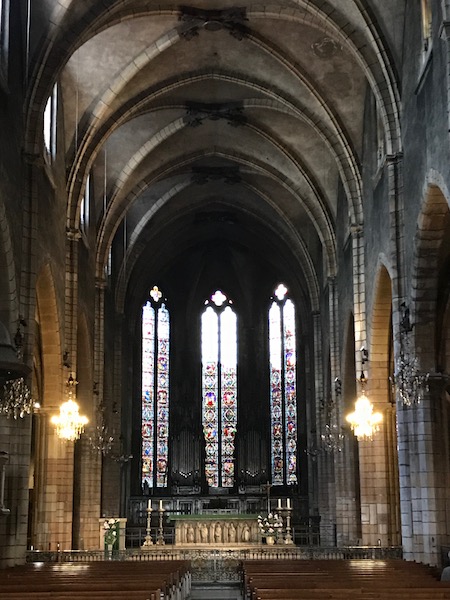

In the baptismal chapel is this lovely stained glass window which shows the baptism of Clovis by Saint Remy on Christmas day in 496.
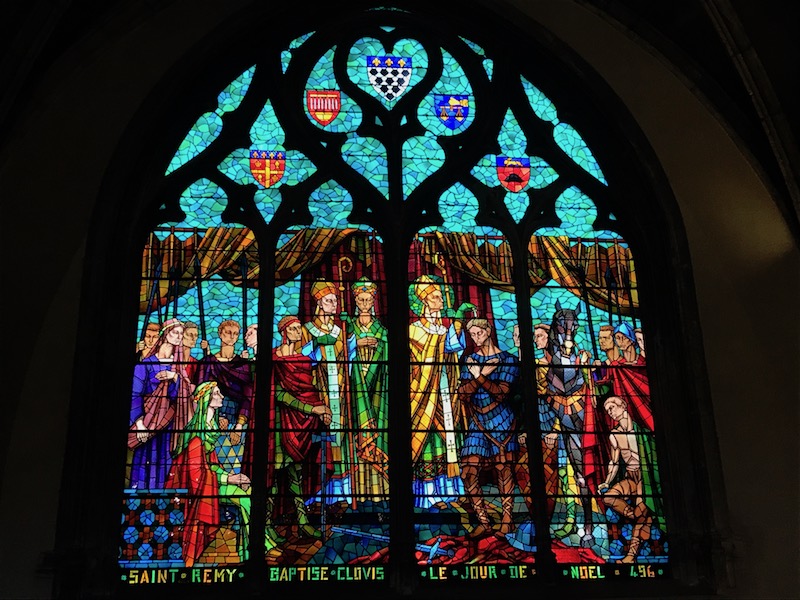
This is one of the side chapels, I believe the Chapel of Our Lady of Mercy (Chapel de Notre Dame). It has an amazing altarpiece with a statue of the Virgin Mary. I tried to get a nice close-up of that along with some of the flamboyant Gothic carvings around it.
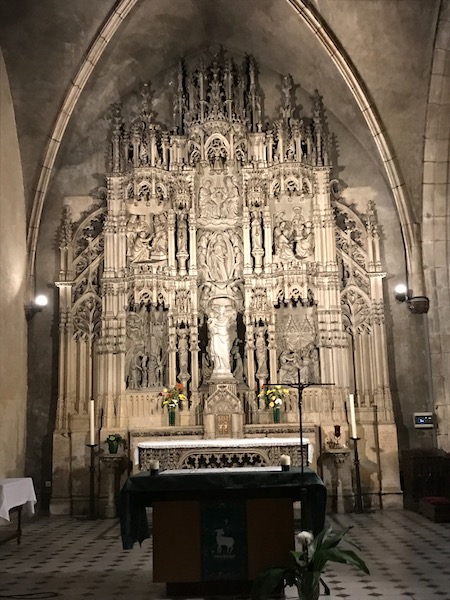
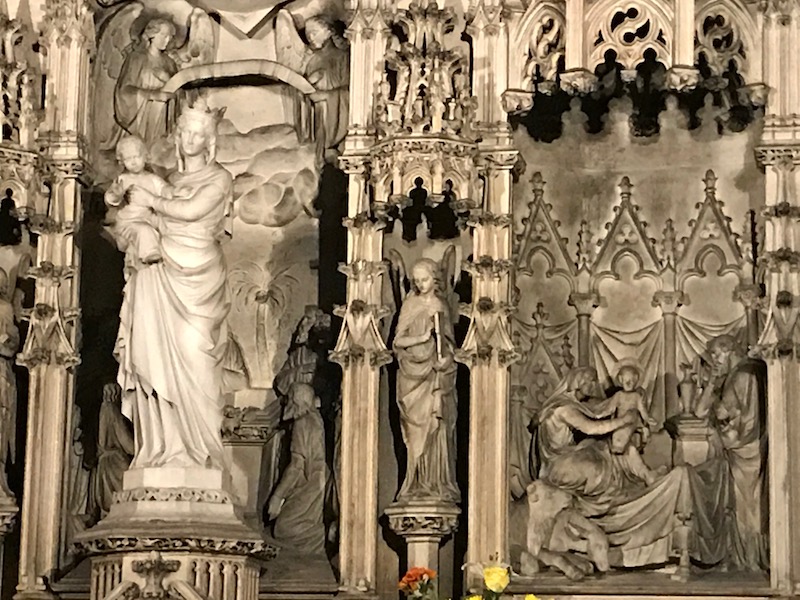
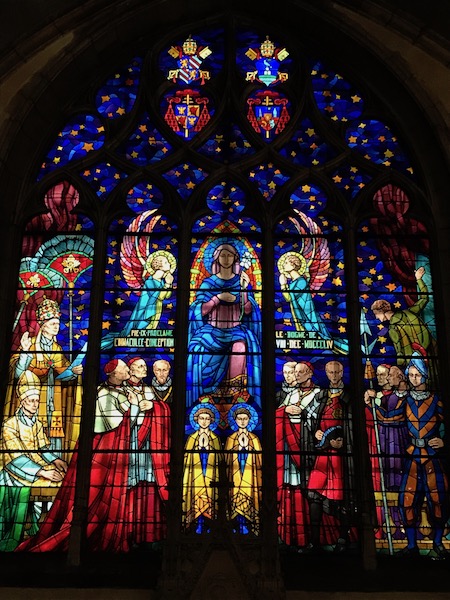
The rose window, although I wasn't able to get as good of a close-up as I would have liked.
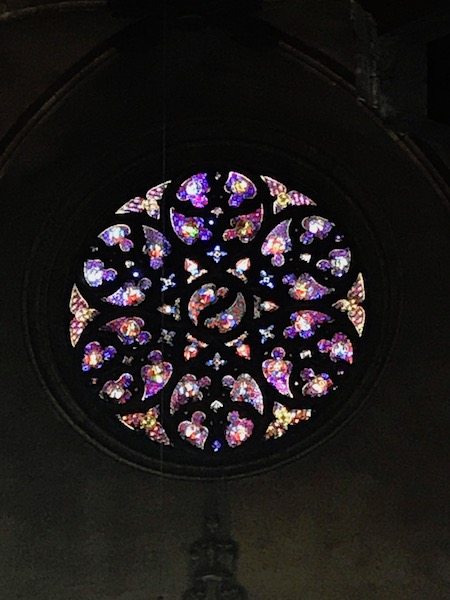
The Chapel of Saint Joseph (I think) ... this is 3 different side chapels that were put together. The altar dates from 1893. In the 2nd picture, you can (hopefully) make out St. Joseph being crowned by Jesus and Mary. Jesus and Mary and seated at the bottom, holding a crown that they will put on St. Joseph who is seated above.
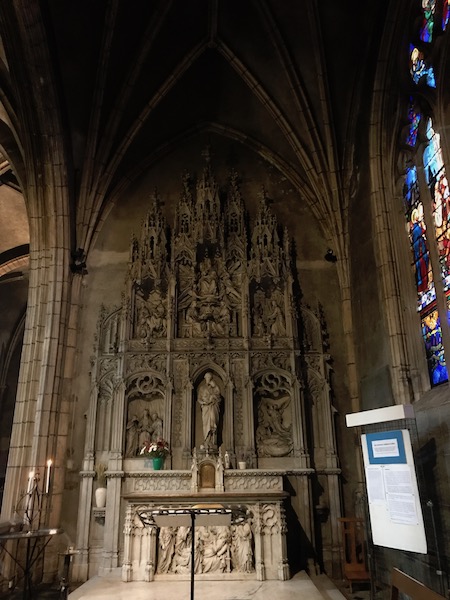
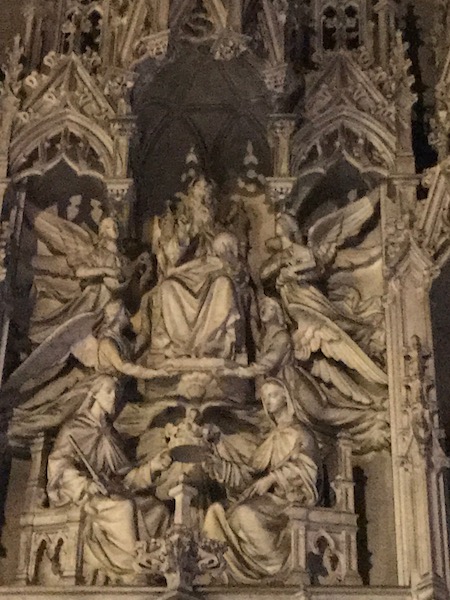
Another great stained glass window (yes, I have a thing for stained glass windows!).
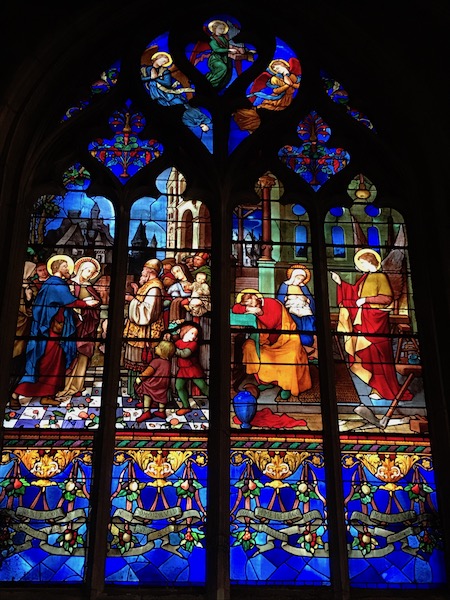
This was a really bad store, I think it was called Brooklyn, that had US products .. really .... the best they can import from the US is Reece's pieces, Nerds, Pop Rocks, and marshmallow fluff??


We were not able to go inside of the Church of Saint Georges. A church has been in this location since 550. The original church was destroyed around 732 during a raid of the Saracens, but was restored in 802. The current church was rebuilt in 1845 and completed in 1848 in a neo-Gothic style, by the same architect who designed the Basilica of Fourvière.


The Church of Saint Nizier dates back about 700 years, and is one of the best examples of Flamboyant Gothic architecture in France. The first church was founded around 150 AD when the first christians arrived into the Roman capital of Lugdunum (the Roman name for Lyon). A church was built here in the 5th century and housed the remains of 48 Christians were martyred in Lyon in 177. Like many churches, the building has been torn down or burned, and rebuilt multiple times. It turned into a flour warehouse after the french revolution, and then a gallery, and back into a church in the 1800's. Looking at the church, you can see different styles: the majority of the church is done in a Flamboyant Gothic style, characteristic of the 14th century. The flamboyant Gothic tower on the left is red brick, while the other tower is neo-Gothic made from limestone. The portal, which was added in 1585, was done in a Renaissance style. The front façade has lots of very nice statues as well as a 17th century clock.




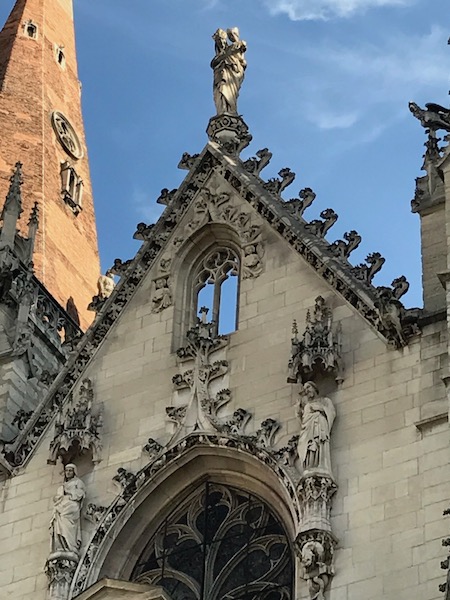
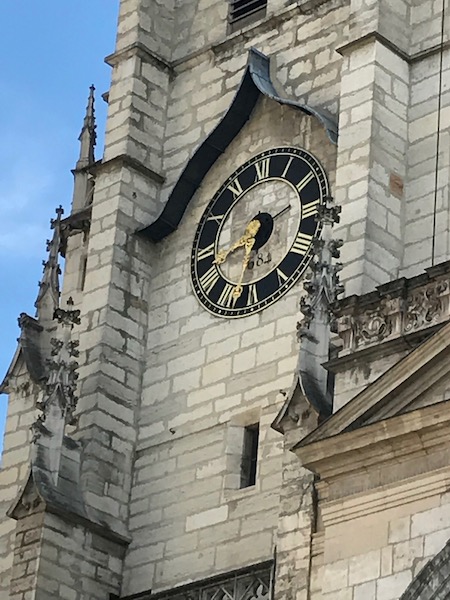
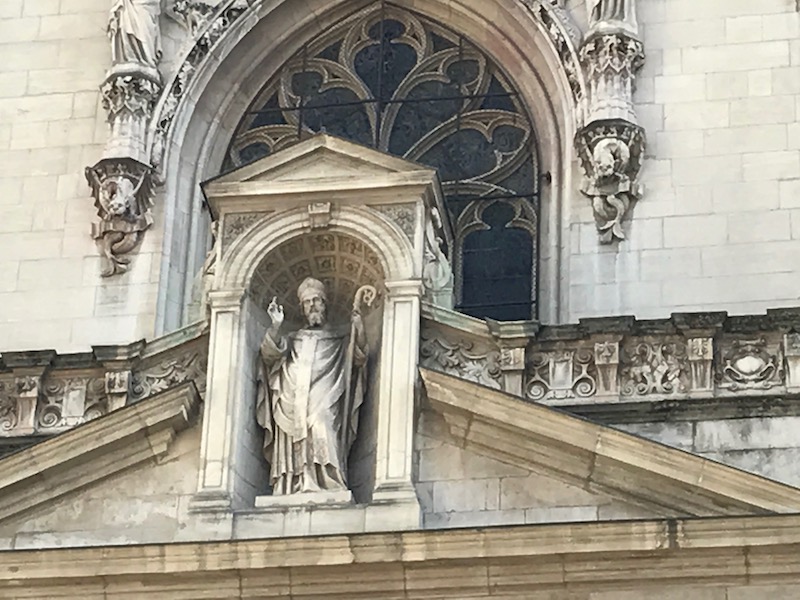
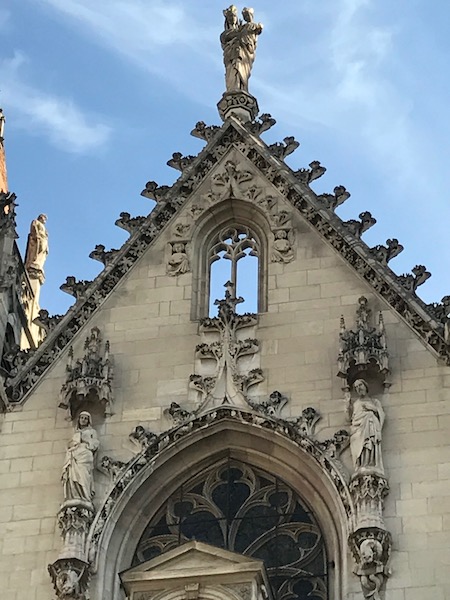
There are not that many interior pictures, especially up-close, since they were actually having mass when we were there and we didn't want to disturb them. The carved wood behind the altar is nice, as well as the neo-Gothic pulpit. The organ, at the back above the entrance, was installed in 1886.

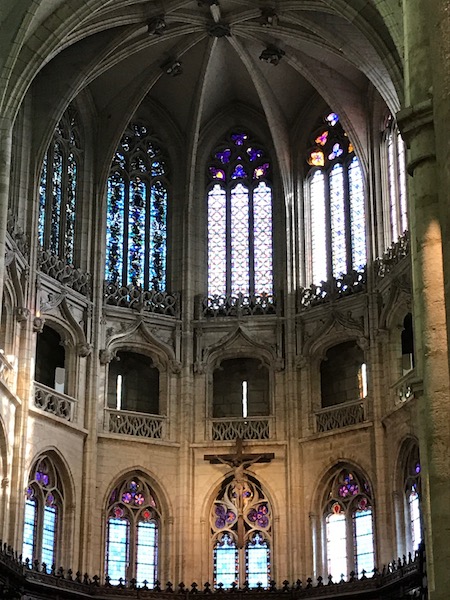
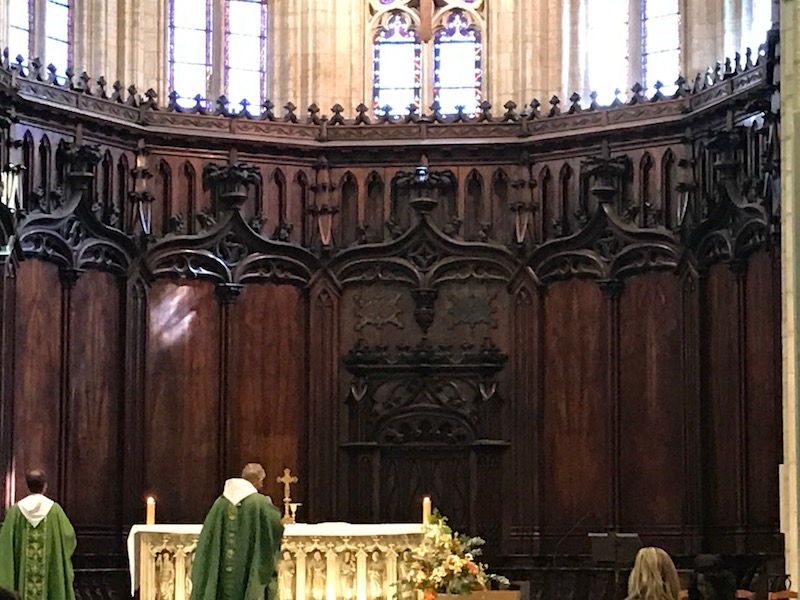

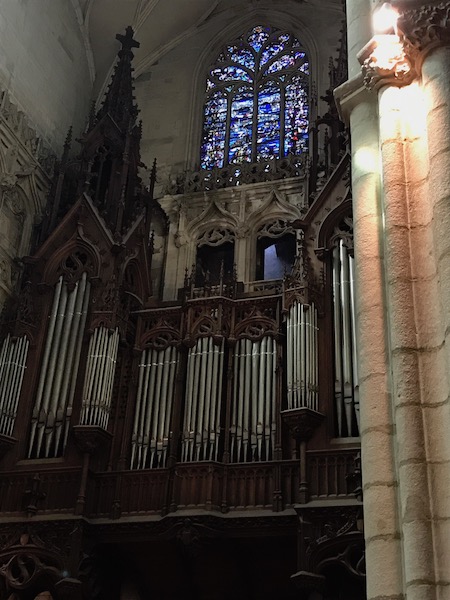
There are two large statues of Saint Peter and Saint Paul (both seated) that date back to the 19th century.


More stained glass, this one is in the Chapel of the Holy Angels and depicts Christ in the desert served by the angels.
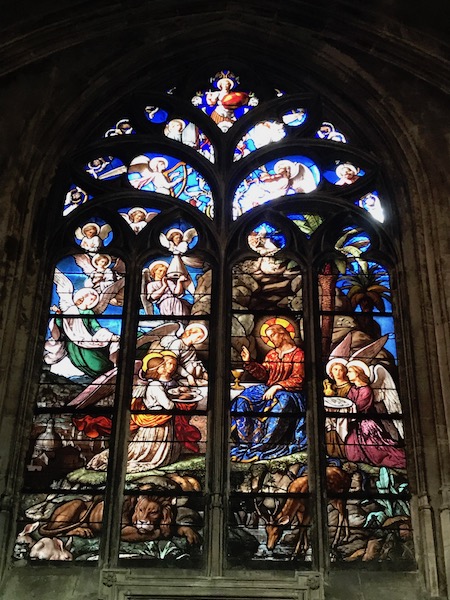
Another window, this one in the Chapel of Saint Joseph. It was created by Claudius Lavergne in 1858 and depicts the life of Saint Joseph.
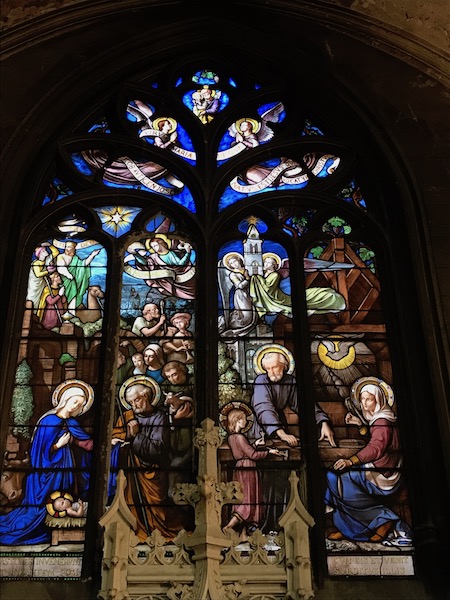
Basilica of Saint-Martin d'Ainay is built in a Romanesque style. The abbey church was built at the end of the 11th century under Abbot Gaucerand, consecrated on 29 January 1107 by Pope Pascal II, and dedicated to Saint Martin of Tours.

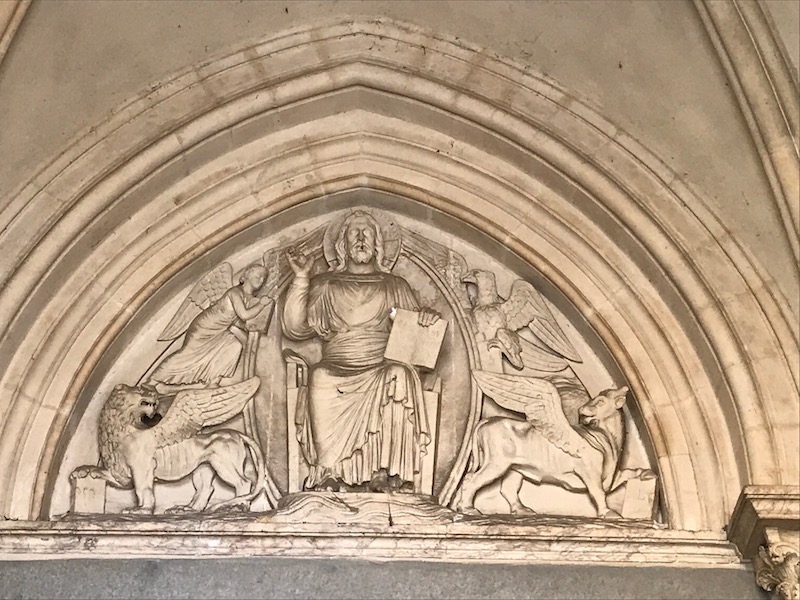
Over the main alter is a half-cupola with a really nice gilded painting.

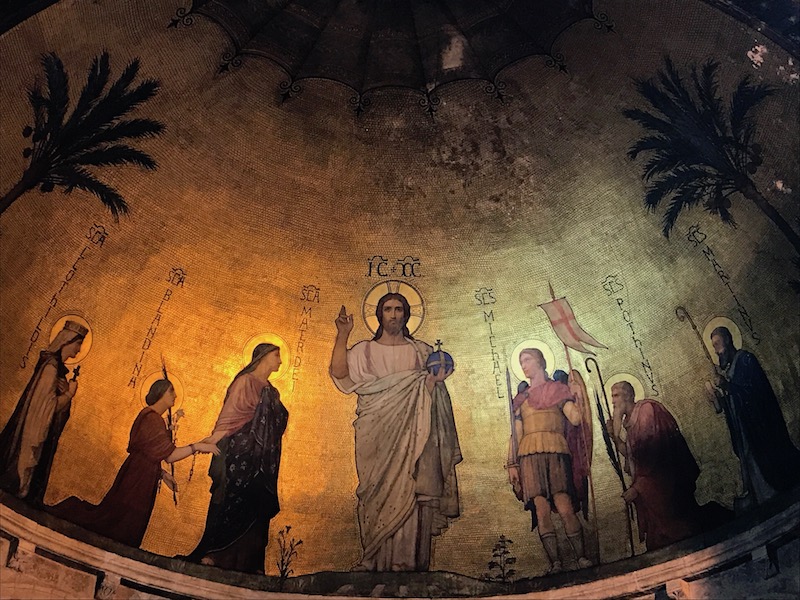
Additional paintings on the ceiling as well as (of course) some stained glass.
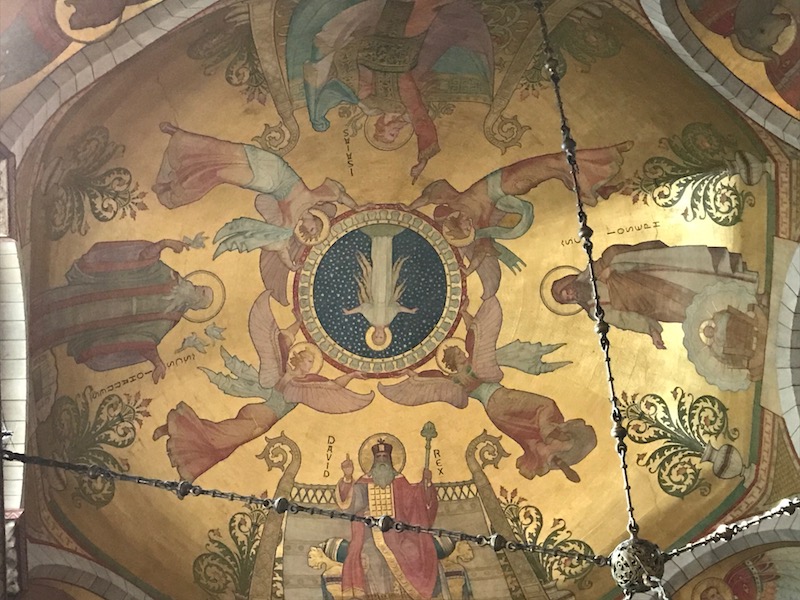
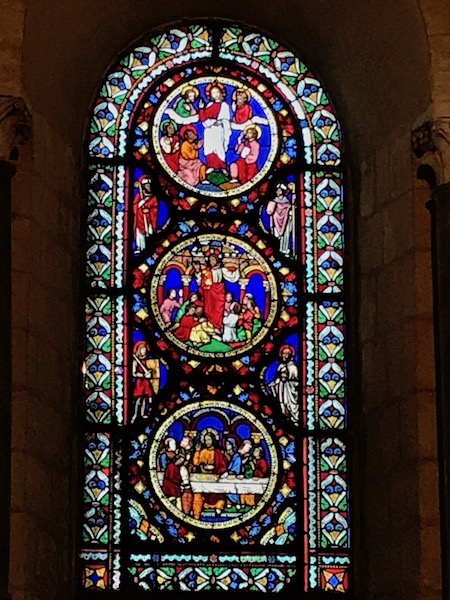
The Claude Debourg's House, which is a rare example of a façade that still has the 16th century Flamboyant-Gothic style bas-relief decoration.

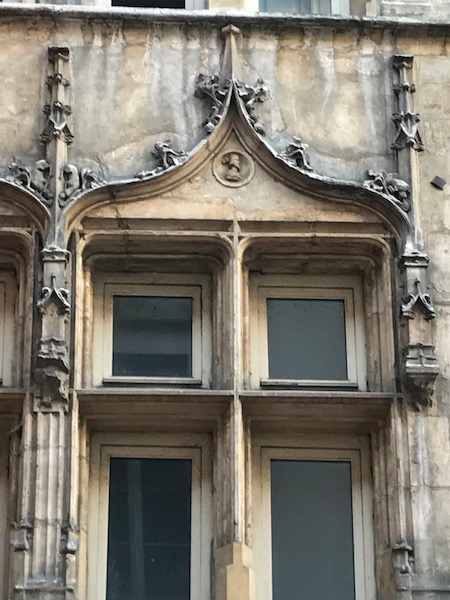

Loge du Change, this was the headquarters of bankers and merchants starting in the 14th century. A new building was built in 1630 and then modified in 1738 to what we have today, with 5 arcades along the bottom.

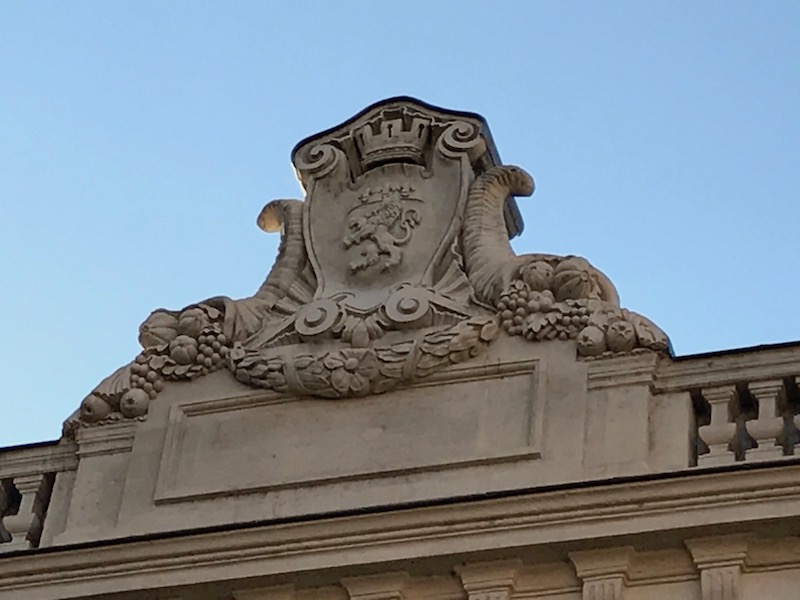
Another one of the many Traboule's in Lyon ... this one had really nice ribbed vaults ... and then the normal enclosed courtyard.
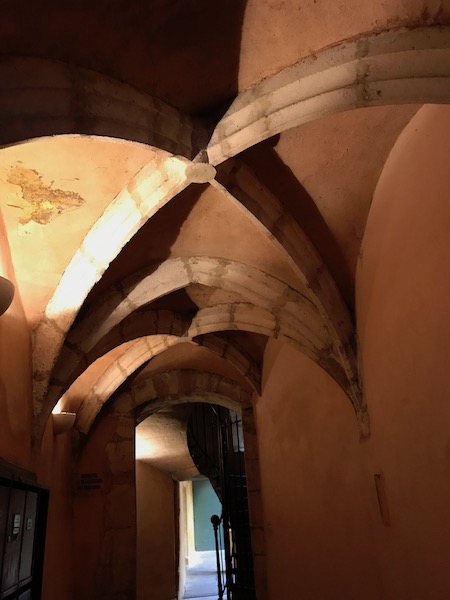

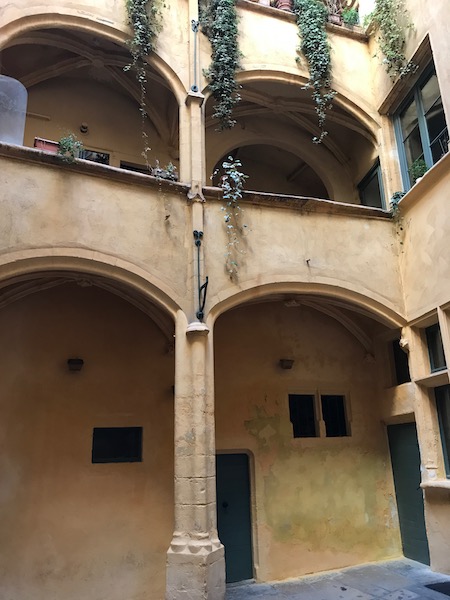
Go straight to Lyon Day 4
or go back to the main Lyon blog page.